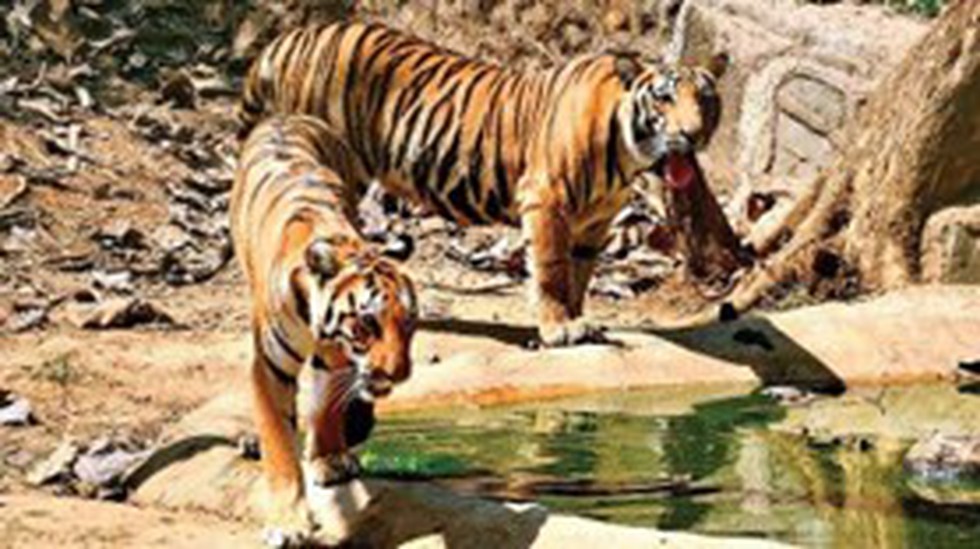
About Melghat Tiger Reserve (MTR):
- Location:
- It is located in the Amaravati district of Maharashtra.
- It is located on the southern offshoot of the Satpura Hill Range in Central India, called Gavilgarh Hill.
- It was established as a wildlife sanctuary in 1967 and was declared a tiger reserve in 1974.
- It was the first tiger reserve in Maharashtra.
- It was among the first nine tiger reserves notified in 1973-74 under Project Tiger.
- The name 'Melghat' means the confluence of various 'ghats' or valleys, as is typical from the landscape of this tiger Reserve.
- Vegetation: The forest is tropical dry deciduous in nature, dominated by teak.
- Rivers: The reserve is a catchment area for five major rivers: the Khandu, Khapra, Sipna, Gadga, and Dolar, all are tributaries of the river Tapti.
- The Tapti River and the Gawilgadh ridge of the Satpura Range form the boundaries of the reserve.
- Tribes: The Korkus are the largest tribal community in Melghat. Other communities include the Gawli community, the Gond tribe, and several other smaller tribal communities.
- Flora: Some of the common species are teak, Lagerstroemia Parviflora, Terminalia Tomentosa, Ougeinia Oojeinensis, Emblica Officinalis, Bamboo, etc.
- Fauna:
- Apart from Tigers the other prominent animals are Sloth Bear, Indian Gaur, Sambar deer, Leopard, Nilgais, dhole, hyena, jungle cat, langur, etc.
- It is considered a stronghold of the critically endangered forest owlet.

About the Tiangong Space Station:
- Tiangong (Chinese for "Heavenly Palace") is a modular space station being constructed by the China National Space Administration (CNSA).
- It is the first space station built by China.
- Tiangong is currently in low Earth orbit (LEO), and it is expected to be operational until 2028.
- It is a three-module space station. The core module, Tianhe, launched in April 2021, followed by the Wentian and Mengtian experiment modules in 2022.
- Tiangong is significantly smaller and lighter than the International Space Station (ISS), with only three modules compared to the ISS's 16 modules.
- It can accommodate up to three astronautsat a time for six-month stays. It can also support six astronauts at a time during crew handovers.
- The station will have its own power, propulsion, life support systems, and living quarters.
- The new space station is planned to share its orbit with the Xuntian space telescope to allow astronauts to easily repair and upgrade the telescope.
- China is only the third country to have put both astronauts into space and build a space station, after the Soviet Union (now Russia) and the US.
Why does China have its own space station?
- China is excluded from the ISS programme, largely due to U.S. concerns over the Chinese space programs' links with the People's Liberation Army.
- In 2011, the US Congress prohibited NASA from cooperating substantially with its Chinese counterpart without express prior authorization.
- This law, known as the Wolf Amendment, makes it very difficult for China to participate in the ISS programme, if the nation even wishes to do so.

About the Transfer of Property Act, 1882:
- The TPA is an important piece of legislation that governs the transfer of property between living beings (inter vivos) in India.
- The TPA primarily applies to a transfer of immovable property; however, some sections and clauses of this Act deal with a transfer of movable property as well.
- This Act was first introduced in 1882 and has undergone several amendments since then.
- It outlines the various modes of required transfer and the legal requirements to ensure the transfer is valid.
- The Act applies to all citizens of India who are involved in the transfer.
- What is the Transfer of Property?
- According to the law, the transfer of property is defined as the act of a living person transferring property to one or more living persons, either presently or in the future.
- This definition also encompasses companies, associations, or groups of individuals.
- What Does ‘Transfer’ Mean Under the TPA?
- The TPA considers the term "transfer" to include various modes such as sale, mortgage, lease, actionable claim, gift, or exchange.
- However, it does not apply to transfers that occur through the operation of law, such as inheritance, forfeiture, insolvency, or sale through a decree's execution.
- Additionally, the Act does not govern property disposal through wills or cases related to the succession of the property.
- Other Important Provisions:
- Capacity to Transfer: The Act specifies that only those who can lawfully transfer property can do so. Those who have attained legal adulthood, possess full mental capacity, and are not legally prohibited from transferring property are considered "competent, competent, and eligible individuals" under the law.
- Delivery of Possession: The Act requires that property transfers include possession delivery. It means the transferor must give the transferee physical possession of the property. This requirement is essential for the validity of the transfer and must be met for the transfer to be legally recognised.
- Registration of Document: The Act requires that the transfer of property be documented and registered with the appropriate authorities. It ensures that the transfer is legally binding and that the rights of both parties are protected.
- Performance of Contract: Under the Act, the transferor is legally obligated to meet all sales agreement terms. It includes passing over custody of the items, paying any payments due, and providing any required paperwork. A breach of contract will result in possible legal action if this is not done.
- The rule against perpetuity: Property must be transferred during the lifetime of an individual, as the perpetuity rule cannot be A property cannot be transferred to an unborn child, and it is necessary to consider that while transferring the interest of the property, the person should be above the age of 18 years.
- For property transfer, the property should be ‘transferrable’. Some properties, like the right to sue, the right to future maintenance, stipends to the air force/navy/political prisoners/civil pensioners, and the chance of an heir-apparent to succeed to an estate, are not transferrable.
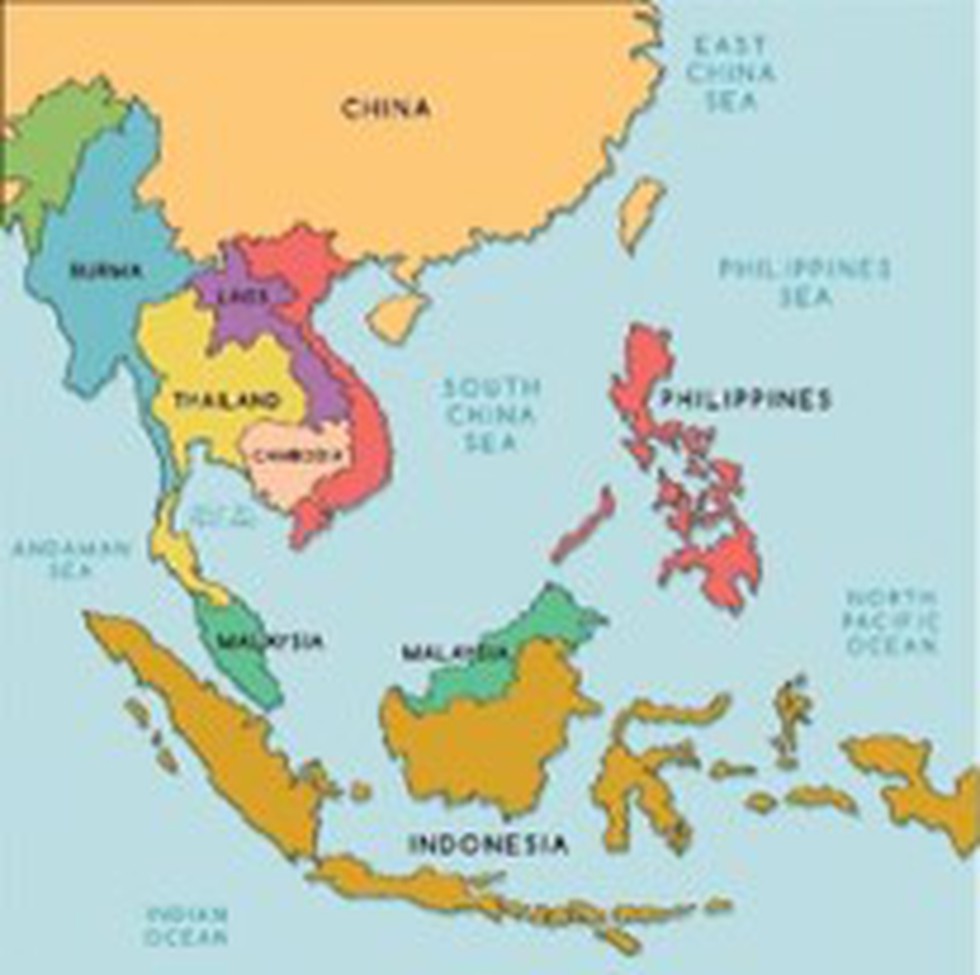
About the East China Sea:
- It is an arm of the Western Pacific Ocean, located in East Asia.
- It covers an area of roughly 1,249,000 square kilometers (482,000 sq mi).
- It is situated between the eastern coast of China, including the Shanghai coast, and the southwestern coast of Japan, including the Ryukyu Islands.
- The Korean peninsula, China, Japan, and Taiwan lie within or border the East China Sea.
- The East China Sea and the South China Sea together form the China Sea.
- It connects with the Japan Sea via the Tsushima Strait and the South China Sea via the Taiwan Strait.
- Its northern extension between mainland China and the Korean Peninsula is the Yellow Sea.
- It is largely a shallow sea. The western edge of the sea is a continuation of the shelf that extends between the South China Sea and the Yellow Sea.
- Rivers: The Yellow River (Huanghe) and the Yangtze River (Changjiang) discharge into the East China Sea, providing much fresh water and suspended particles.
- Weather is dominated by the monsoon wind system, the result of differential heating between land and water.
- Islands: The sea contains several islands, with the most significant being the Ryukyu Islands, which are part of Japan, and the Diaoyu Islands (known as the Senkaku Islands in Japan), which are a source of territorial dispute between China and Japan.
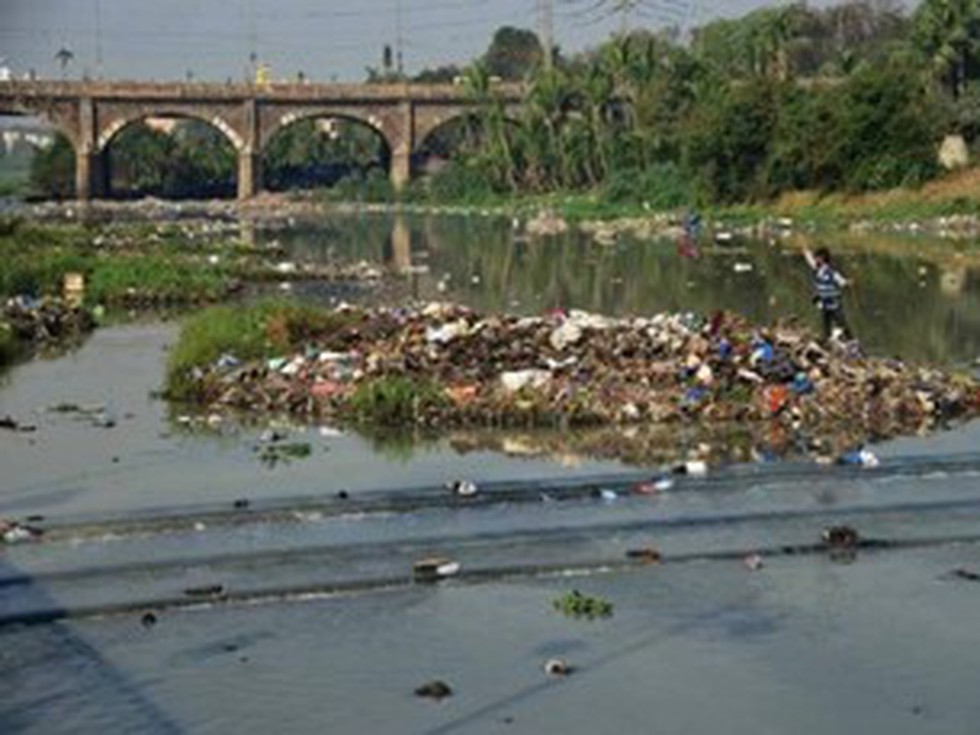
About the Musi River:
- It is a river that flows through the southern Indian state of Telangana.
- It is a tributary of the Krishna River on the Deccan Plateau.
- It was known as the Muchukunda River in earlier days.
- Hyderabad stands on the bank of this river, which divides the city between the old and the new.
- Course:
- It begins in the Anantagiri Hills near Vicarabad, Rangareddi district, 90 kilometress to the west of Hyderabad.
- It joins the Krishna River near Wazirabad in Nalgonda district after covering a distance of about 240 km.
- Dams: Himayat Sagar and Osman Sagar are the two dams that are constructed over the river.
- Bridges:
- The River is crossed by several historical bridges, including the Purana Pul (Old Bridge), which was built during the reign of the Nizams of Hyderabad.
- The other bridges are located in Dabirpura, Amberpet Chaderghat and Uppal Kalan.
- On 28 September 1908, Musi River was the reason for the devastating floods in Hyderabad.
- Due to random urbanization and a lack of planning, the river has become a holder of all the unprocessed domestic and industrial waste drained out of Hyderabad.

About Leopard Toby Puffer Fish:
- It is a deepwater reef species that lives in deep water caves and reef slopes at an average depth of 50 to 100 meters.
- Scientific name: Canthigaster leoparda
- Appearance: It is characterised by clusters of black dots along the flanks of its pale body.
- It is also known as blowfish.
- Habitat: It is believed to have a thriving population in its deep-sea habitat.
- Puffer fish in general are known for their unique morphological appearance and features, especially their defensive mechanism of inflating and deflating.
- These small sea creatures pump water into their stomachs until they turn into the shape of a ball, larger than their normal body size, to evade predators.
- Distribution: It is usually found in the waters of the Philippines, Indonesia, Guam, and Micronesia.
- Conservation status
- IUCN: Least Concern

About Satellite internet technology:
- Satellite Internet works similarly to satellite TV.
- It begins with an internet service provider sending satellites into space to orbit around the earth.
- That ISP then relies on a signal routed through one of those satellites in low- or high-Earth orbit and a receiver dish that picks up that signal.
- The receiver is typically placed on your home or business in a spot with as much unobstructed access to the sky as possible.
- You'll connect a modem to that dish to translate the incoming signal into a workable internet connection.
- The more common method of delivering high-speed satellite internet usually involves constellations of low-Earth orbit (LEO) satellites.
- LEO satellites orbit at a height of between 250 and 2,000 kilometres above the planet.
- The satellite that orbits the Earth communicates using radio waves.
- Advantages
- The most ideal internet access is for users who live in rural areas or live far away from cities or cable or phone offices.
- It uses satellite dish for the two-way communication and does not need telephone cables or lines.
- Compared to other internet options, there are fewer or negligible network outages in case of satellite internet.
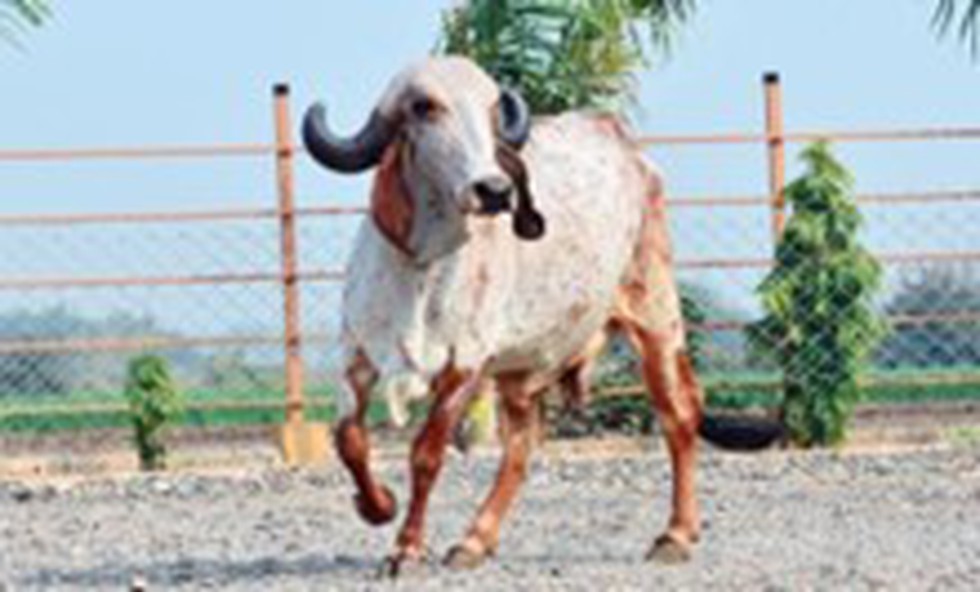
About the Rashtriya Gokul Mission
- It has been implemented for the development and conservation of indigenous bovine breeds since December 2014.
- It is continued under the umbrella scheme Rashtriya Pashudhan Vikas Yojana from 2021 to 2026.
- Objectives
- To enhance the productivity of bovines and increase milk production in a sustainable manner using advanced technologies.
- To propagate the use of high genetic merit bulls for breeding purposes.
- To enhance artificial insemination coverage through strengthening the breeding network and delivery of Artificial insemination services at farmers' doorstep.
- To promote indigenous cattle & buffalo rearing and conservation in a scientific and holistic manner.
About Gir Cow:
- It is an excellent dairy cattle breed well-known among milk producers.
- It is known for its milk producing ability, good fertility, heat tolerance, easy maintenance, resistance to diseases, and longevity.
- The name of the breed is derived from its place of origin, the “Gir” forest of Gujarat.
- It has the ability to adapt to the entire central belt and northern and southern stretches.
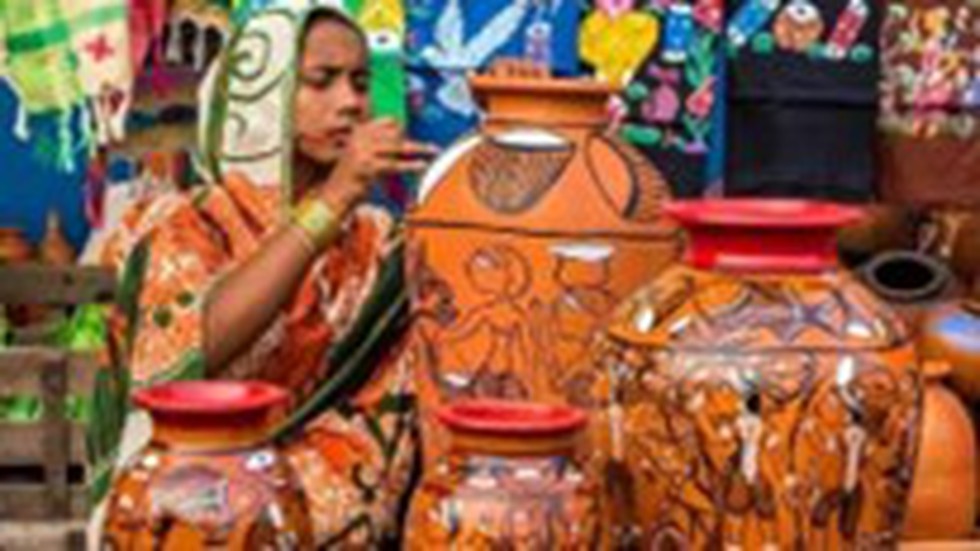
About Saras Aajeevika Mela:
- It is an initiative by the Deendayal Antyodaya Yojana-National Rural Livelihoods Mission (DAY-NRLM) of Ministry of Rural Development.
- Aim: To bring the rural women Self Help Group members under one platform to showcase their skills, sell their products, and help them build linkages with potential market players.
- It is organised by the Ministry of Rural Development and National Institute of Rural Development and Panchayati Raj (NIRDPR)
Key facts about DAY-NRLM
- It is a flagship rural poverty alleviation program of the Government of India.
- It addresses multiple dimensions of The programme aims to reach out to 10 Crore rural poor households and organise one woman member from each rural household into affinity-based women SHGs.
- These SHGs provide close, long-term handholding support to their members, enabling them to access financial services from banks, diversify and stabilise their livelihoods, and effectively access their entitlements with ease.
- Objective: To ensure that each family is able to achieve household food security and have more than one stabilised livelihood source.
- The Mission seeks to achieve its objective through investing in four core components, viz.,
- Social mobilisation, promotion, and strengthening of self-managed and financially sustainable community institutions for the rural poor.
- Financial inclusion of the rural poor
- Sustainable livelihoods; and
- Social inclusion, social development, and convergence
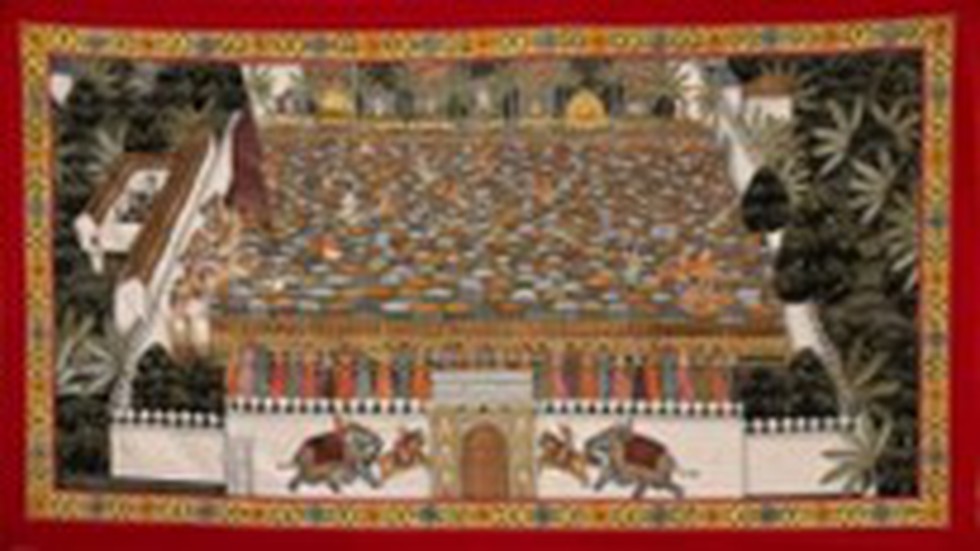
About Pichwai Painting:
- It is a traditional style of painting that originated in the state of Rajasthan, India.
- The history of this art form can be traced back to the 17th century.
- It is believed to have originated in the town of Nathdwara in Rajasthan.
- Theme: It mainly features the various stages of Lord Krishna’s life.
- Material used: The artists use stone pigments, especially for gold and silver tones. The brighter orange, red, chrome yellow and kesari colours come from vegetable dyes
- Other schools of Pichwai— Nathdwara, Kishangarh and Bundi in Rajasthan.
- They are often used to decorate the backdrops of Hindu temples, where they serve as a visual representation of the stories associated with Lord Krishna.
- These paintings have distinct features of a heavier body and large elongated eyes, with a broad nose of Shrinathji, similar to the features of the idol at the temple.
- The paintings are often filled with details, such as flowers, animals, and geometric patterns, which are arranged in a symmetrical and balanced composition.
- Some of the famous Pishwai Paintings are:
- Shrinathji in Black & Gold
- Ras Leela – Krishna with Radha
- Giriraja Pichwai – depicting Lord Krishna carrying Govardhana mountain on his little finger




.png)
























































































































































.png)
.png)
.png)
.png)
.png)


.png)
.png)
.png)





.png)




.png)
.png)
.png)
.png)
.png)
.png)
.png)
.png)
.png)

.png)







.png)
.png)


.png)
.png)
.png)


.png)

.png)
.png)





.jpg)

.png)
.png)


.png)

.png)
.png)
.png)

.jpg)

.jpg)


.png)

.png)
.png)
.png)
.png)
.png)
.png)
.png)
.png)
.png)
.png)




.png)

.png)





.png)
.png)
.png)
.png)
.png)
.png)
.png)
.png)
.png)
.png)
.jpg)
.jpg)

.png)
.png)
.png)
.png)
.png)
.png)
.png)
.png)
.png)
.png)
.png)
.png)
.png)
.png)
.png)
.png)
.png)
.png)
.png)
.png)
.png)
.png)



.png)
.png)

.jpg)
.jpg)


.jpg)
.jpg)
.jpg)
.jpg)
.jpg)

.jpg)








.jpg)
.jpg)
.jpg)
.jpg)
.jpg)

















.jpg)
.jpg)







.jpg)


















.jpg)
.jpg)






























































































.jpg)
.jpg)


























.jpg)

.jpg)










.jpg)








.jpg)




.jpg)










.jpg)


















.jpg)












































.jpg)














.jpg)
.jpg)
.jpg)





.jpg)

.jpg)
.jpg)





































































.jpg)


































.jpg)
.jpg)
















































.jpg)












.jpg)


.jpg)




.jpg)
.jpg)
.jpg)

.jpg)
.jpg)
.jpg)
.jpg)

.jpg)
.jpg)
.jpg)

.jpg)
.jpg)
.jpg)
.jpg)
.jpg)
.jpg)
.jpg)
.jpg)

.jpg)


.jpg)
.jpg)
.jpg)
.jpg)
.jpg)
.jpg)
.jpg)
.jpg)
.jpg)
.jpg)











.jpg)
.jpg)





.jpg)
.jpg)
.jpg)
























.jpg)
























.jpg)









.jpg)
.jpg)







.jpg)
.jpg)









































.jpg)
.jpg)
.jpg)
.jpg)
.jpg)

.jpg)
.jpg)
.jpg)
.jpg)
.jpg)


.jpg)
.jpg)
.jpg)
.jpg)
.jpg)

.jpg)
.jpg)
.jpg)
.jpg)
.jpg)
.jpg)
.jpg)
.jpg)
.jpg)
.jpg)
.png)

.png)
.png)

.png)
.png)
.png)
.png)


.jpg)
.jpg)

.jpg)
.jpg)
.jpg)

.png)
.png)
.png)
.png)
.png)
.png)
.png)

.png)
.png)
.png)
.png)
.png)
.png)
.png)
.png)
.png)
.png)





































































-min.png)



.png)




.png)








































